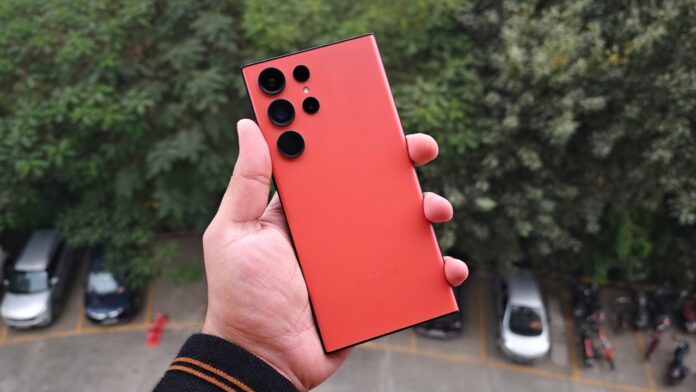Samsung’s Galaxy S series smartphones have been a pinnacle of flagships in the Android world. Today, we’ll stroll through the Samsung Galaxy S series, starting from the Galaxy S20 and rolling to the fresh Galaxy S23. We’re not just talking rupees and cents, but we’re also diving into the cool stuff like the fancy features in each of the generations, and what justified the price jump from one generation to next, if any. Have a look.
Samsung Galaxy S20 Series (February 2020 – January 2021)

Like most flagships from Samsung, the Galaxy S20 series had a close to a 1-year stint where the Galaxy S20 was priced at Rs 66,999. The Galaxy S20+ cost Rs 73,999, and the Galaxy S20 Ultra was priced at Rs 92,999 in India.
Samsung has always aimed at making the Galaxy S series device an all-rounded offering. The major highlight of the Galaxy S20 series was the camera features it came loaded with. The Galaxy S20 and Galaxy S20+ featured up to 30x zoom, which the company calls Space Zoom, while the Galaxy S20 Ultra 5G supported up to 100x Space Zoom.
The smartphones were loaded with the Single Take feature that allows users to capture a number of photos and videos, such as live focus, cropped, ultra-wide, and more, all at the same time. The series also featured up to 8K video recordings. The Samsung Galaxy S20 Ultra was loaded with a 108-megapixel sensor, and it came with an option to shift dynamically between a high Resolution 108MP mode and a 12MP mode, using the nona-binning technology which combined nine pixels into one at the sensor level.
The Qualcomm Snapdragon 865 Processor powered the smartphones and up to 12GB of LPDDR5 RAM. The Galaxy S20 was loaded with 128GB of internal storage, while the Galaxy S20+ and Galaxy S20 Ultra came with 128GB and 512GB of internal storage. The phones had a glass sandwich design, all with a QHD+ display. While the Galaxy S20 5G was loaded with a 4,000mAh battery, the Galaxy S20+ 5G came with a 4,500mAh battery and Galaxy S20 Ultra 5G with a 5,000mAh battery.
It’s quite a shocker if you notice that all the handsets had a QHD+ resolution, from the base model to the Ultra, while last year, only the S23 Ultra had this resolution.
Samsung Galaxy S21 Series (January 2021 – February 2022)

Then came the Samsung Galaxy S21 series more than a year later, with the S21 Ultra starting at Rs 1,05,999 for the 12GB RAM + 128GB storage variant, while the 16GB + 512GB variant was priced at Rs 1,16,999. The Galaxy S21+ started at Rs 81,999 for the 8GB RAM + 128GB storage variant, and 8GB RAM + 256GB variant was priced at Rs 85,999. The standard Galaxy S21 began at Rs 69,999 for the 8GB + 128GB storage model whereas the 8GB + 256GB variant was priced at Rs 73,999.
For the base model, the price was increased by Rs 4,000 from Galaxy S20 to Galaxy S21, while for the Plus variant, the price went up by Rs 8,000 for the base variant. The price for the Ultra model went up by a whopping Rs 12,000, making it the first time when the price of a Galaxy S series smartphone went above the Rs 1,00,000 mark.
Read More: Samsung Galaxy S21 Ultra 5G Review: Hits and Misses
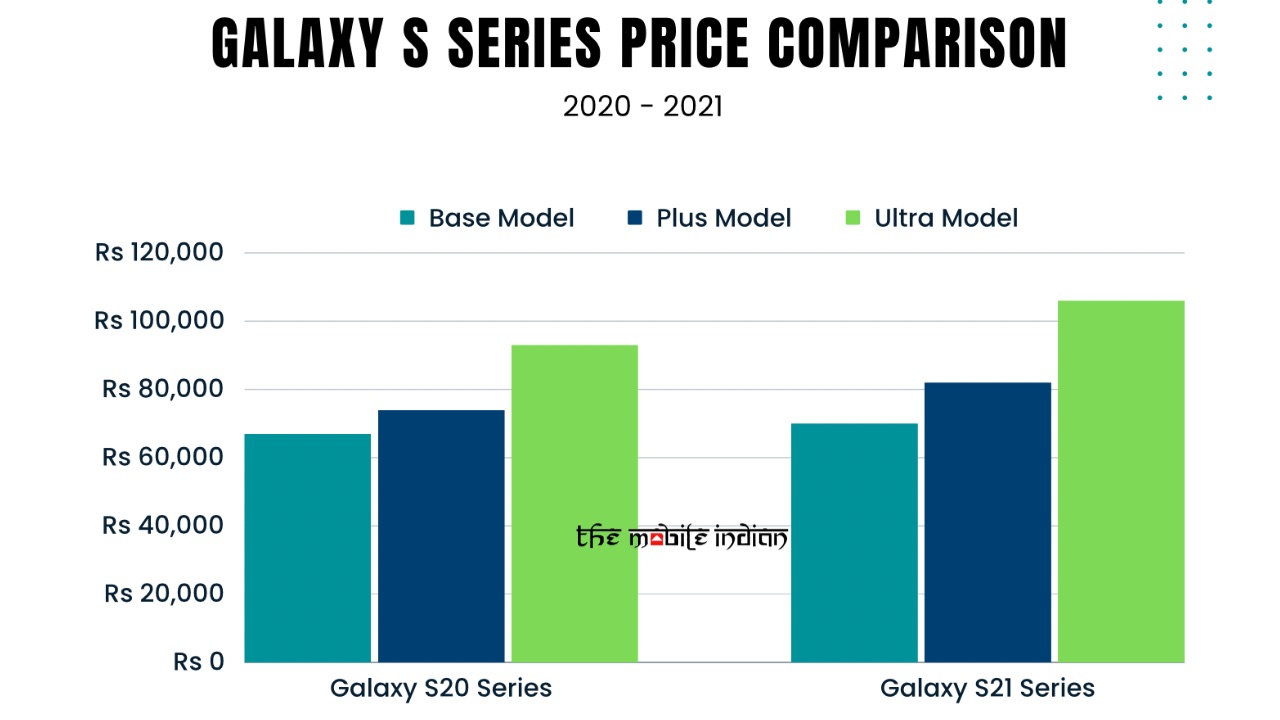
While the design of the smartphones changed heavily, the specs were downgraded for the Plus and base model and in some sense, for the Ultra model as well. The Galaxy S21 and Galaxy S21+ display went from QHD+ in S20 and S20+ to FHD+. Further, the Galaxy S21 had an inferior plastic body with a metal frame, while both the S21+ and S21 Ultra had a glass sandwich design. If that wasn’t enough, Samsung used the Exynos 2100 Chipset in all three of the devices here in India and most other regions. The chip was underperforming intensively and had heating issues as well, causing the battery to drain faster. In addition, the RAM was downgraded to 8GB from 12 GB.
The battery remained identical on the S21 and the S21 Ultra over the S20 and the S20 Ultra. However, the battery went from 4500mAh to 4800mAh in Galaxy S21+, which made it worth an upgrade until the heart of the device, the chip, ruined the overall performance.
Overall, we would say that while the design of the Galaxy S21 series really made waves across the industry, the price bump wasn’t justified, considering there were irrational choices made which LED the smartphones to become more of a downgrade rather than an upgrade.
Samsung Galaxy S22 Series (February 2022 – February 2023)
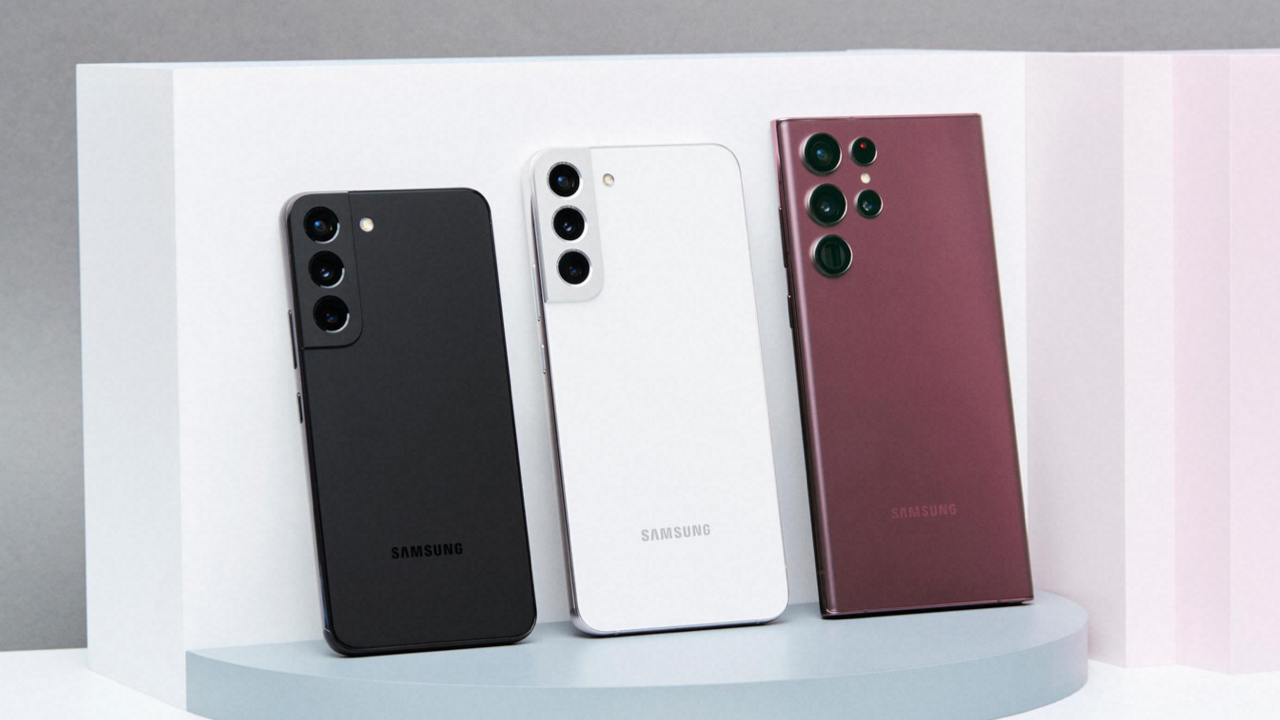
This was the year when we finally saw a replacement of the Note series device, where the Galaxy S22 Ultra truly replaced the Note 20 Ultra instead of the Galaxy S21 Ultra. This was because it adopted the same boxy design as the Note 20 Ultra and came with a built-in S-Pen. The Galaxy S22 Ultra comes in two variants, where the 12GB + 256GB and 12GB + 512GB trims are priced at Rs 1,09,999 and Rs 1,18,999, respectively.
The price for the base variant increased by Rs 4,000, while the price for the top-end model increased by Rs 1,000. However, this year didn’t stop Samsung from making any downgrades, as the RAM in the top model went from 16GB in Galaxy S21 Ultra to 12GB in Galaxy S22 Ultra. Aside from that, Samsung employed the Snapdragon 8 Gen 1 SoC in India this time, which was a worthy upgrade from the Exynos 2100 in the S21 Ultra. The issues Snapdragon 8 Gen 1 had is a different story, though.
While the battery capacity remained at 5000mAh, the speeds went from 25W to 45W. Samsung also upped the stakes in the software department, announcing that its flagships would now receive 4 years of major OS upgrades. The major addition was the built-in S-Pen, which provided an additional means for the consumer to interact with the phone and means for superior productivity as well. Overall, the Galaxy S22 Ultra was worth the price increase over the Galaxy S21 Ultra with enough changes and enhancements.
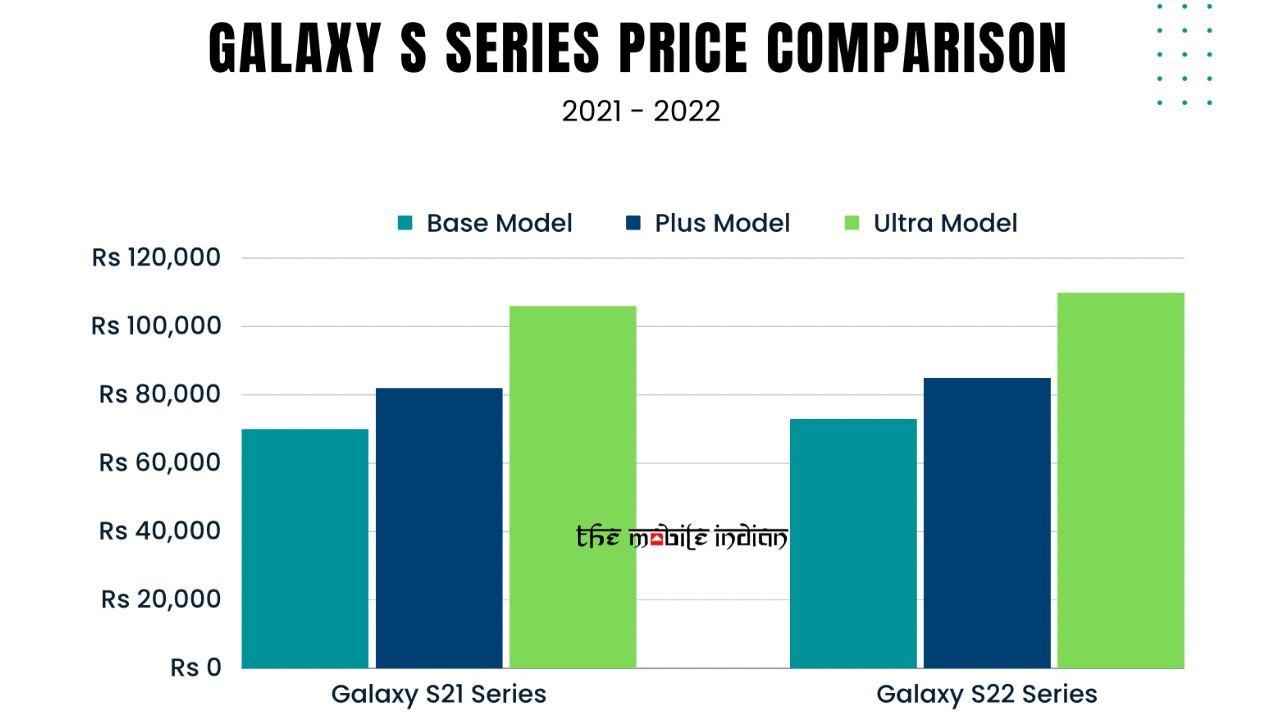
Coming to the other two models, the Galaxy S22+ came in 8GB + 128GB and 8GB + 256GB variants priced at Rs 84,999 and Rs 88,999, respectively. As for the Galaxy S22, it also came in 8GB + 128GB and 8GB + 256GB variants, which were priced at Rs 72,999 and Rs 76,999, respectively. The S22+ and the S22 both saw a price bump of Rs 3,000 in both of their respective variants.
Read More: Samsung Galaxy S22+, Galaxy S22 Review: Dawn of the Galaxies
Samsung paid attention to the feedback and returned to the Glass sandwich design on the base Galaxy S22 with Gorilla Glass Victus protection and the Armour Aluminium frame. The displays remained similar, but the chip got upgraded to Snapdragon 8 Gen 1, which was a welcome move. The cameras were upgraded as well, while the battery capacities went downhill. The Galaxy S22 got a 3700mAh battery (down from 4000mAh), while the Galaxy S22+ got a 4500mAh cell (down from 4800mAh).
To conclude, while the S22 Ultra was a major upgrade, the base and plus models were somewhere in the middle. Had they gotten the same batteries or bigger than Galaxy S21 series, they could have been much more worth the price increase and would have made up for the inefficiencies caused by the chipset.
Samsung Galaxy S23 Series (February 2023 – January 2024)

Since the Galaxy S20 series, this would be the first time when the Galaxy S series devices maintained the ‘brand’s latest flagship offering’ status for 11 months instead of 12. The Galaxy S23 Ultra had minor refinements in design but major ones under the hood. Before we talk of specs, let’s talk about price. The S23 Ultra came in three variants such as 12GB + 256GB priced at Rs 1,24,999, 12GB + 512GB at Rs 1,34,999 and 12GB + 1TB at Rs 1,54,999.
Samsung offered a 1TB model for its Ultra smartphone in India for the first time. The price for the base variant increased by Rs 15,000, while the price for the 512GB model increased by Rs 16,000, marking the biggest ever jump in the history of Ultra flagships since Galaxy S20 Ultra.
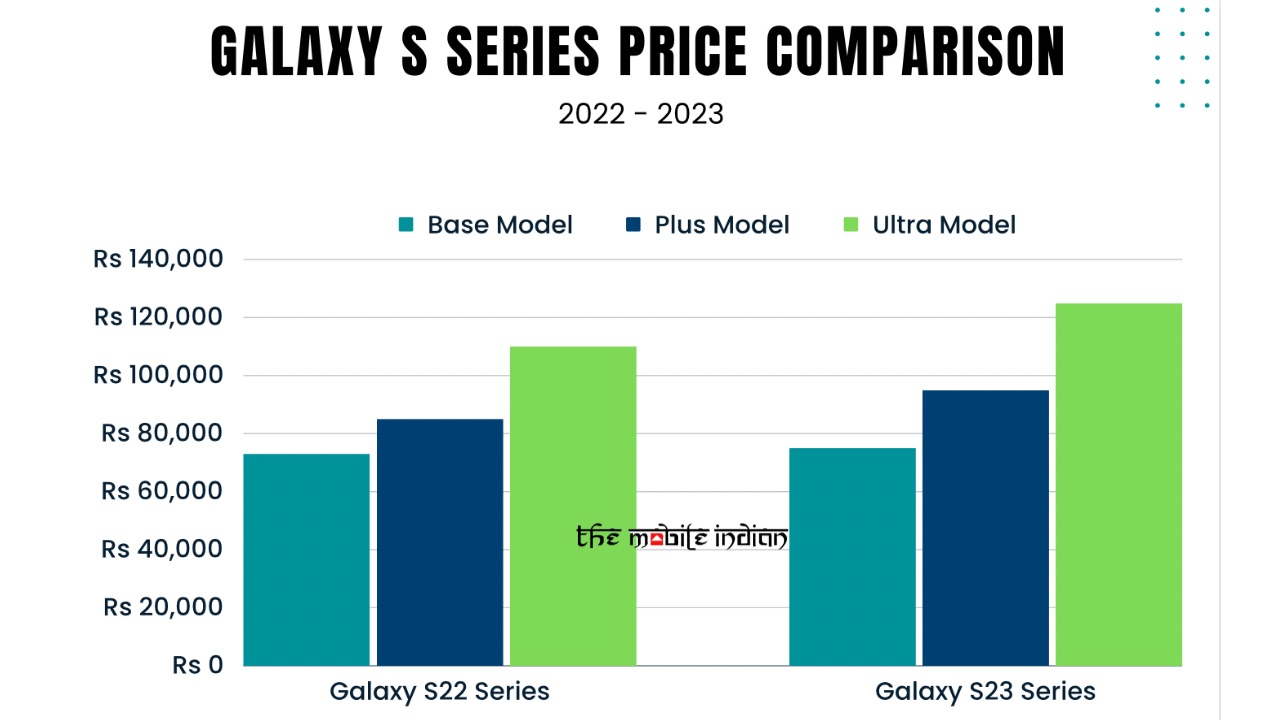
The Rs 15,000 bump in price got you a much better chip under the hood, which was Snapdragon 8 Gen 2. It was majorly more powerful and efficient than 8 Gen 1, making the Galaxy S23 Ultra perform way better than the Galaxy S22 Ultra. The primary camera sensor got upgraded from 108-megapixel to 200-megapixel while Gorilla Glass Victus 2 was employed on the front and back, which was claimed to be stronger than S22 Ultra’s Gorilla Glass Victus+. And that was it. While it may not seem that the price bump brought adequate changes, the sole upgrade in processor made the experience at least 10 times better on last year’s flagship in terms of battery life, cameras and performance over the Galaxy S22 Ultra.
Read More: Samsung Galaxy S23 Review: More than a refinement?
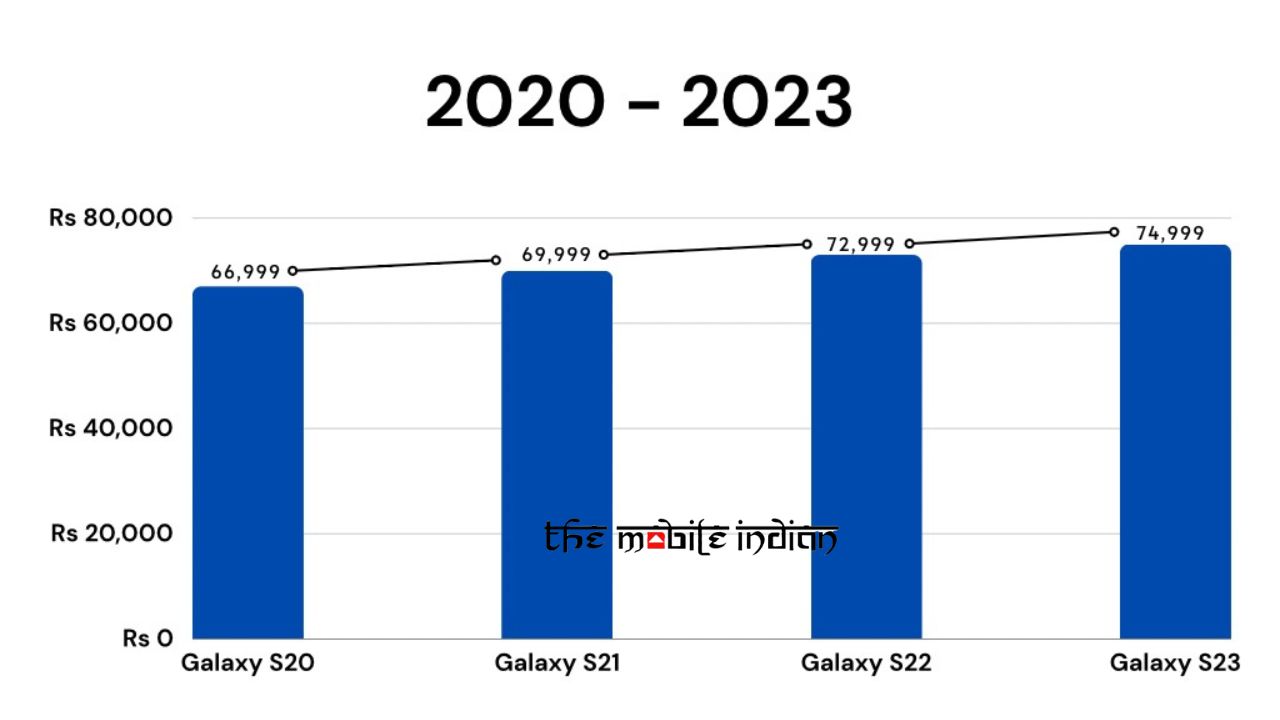
The Galaxy S23+ was made available in two variants including 8GB + 256GB and 8GB + 512GB priced at Rs 94,999 and Rs 1,04,999, respectively. As for the Galaxy S23, it was available in the 8GB + 128GB model for Rs 74,999 and the 8GB + 256GB model for Rs 79,999.
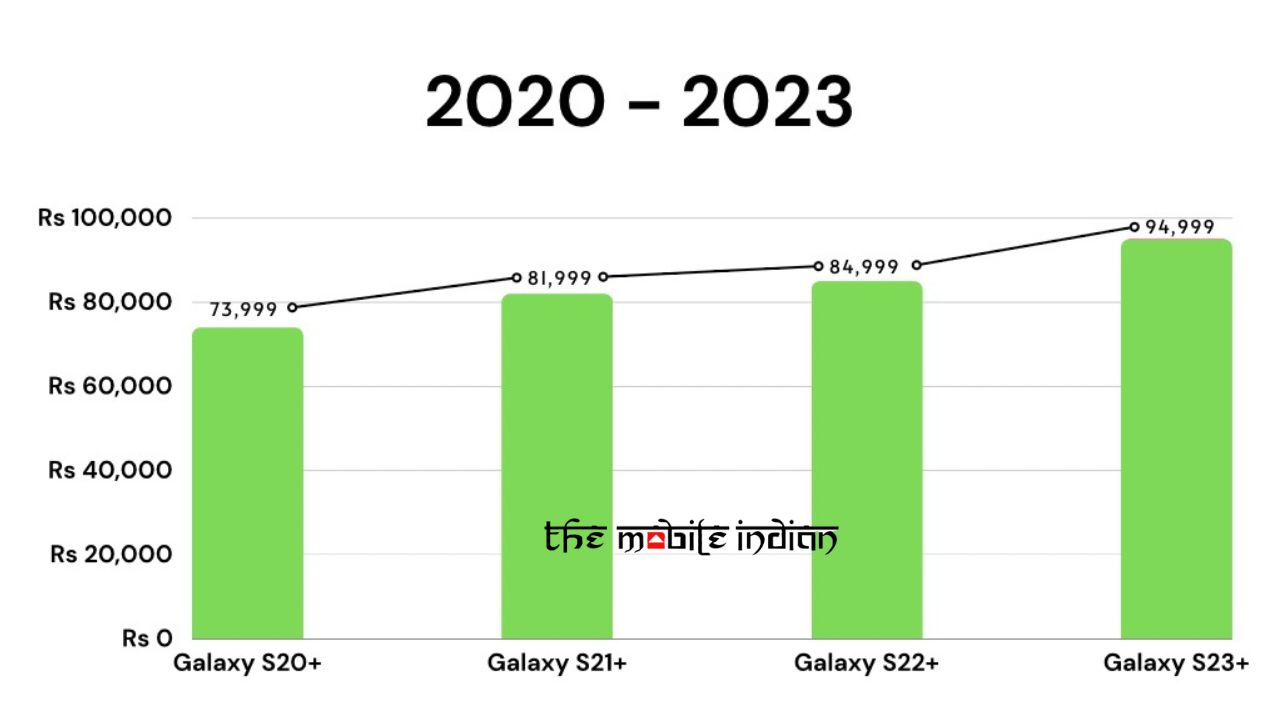
The Galaxy S23+ ditched the 128GB model and started with 256GB as base storage. So, when compared with the 256GB model of the S22+, the price was increased by Rs 6,000, which is reasonable. That’s because you got a better chip, a brighter display, and a bigger 4700mAh battery, all of which accounted for the jump in price. The Plus model was definitely worth the price jump.
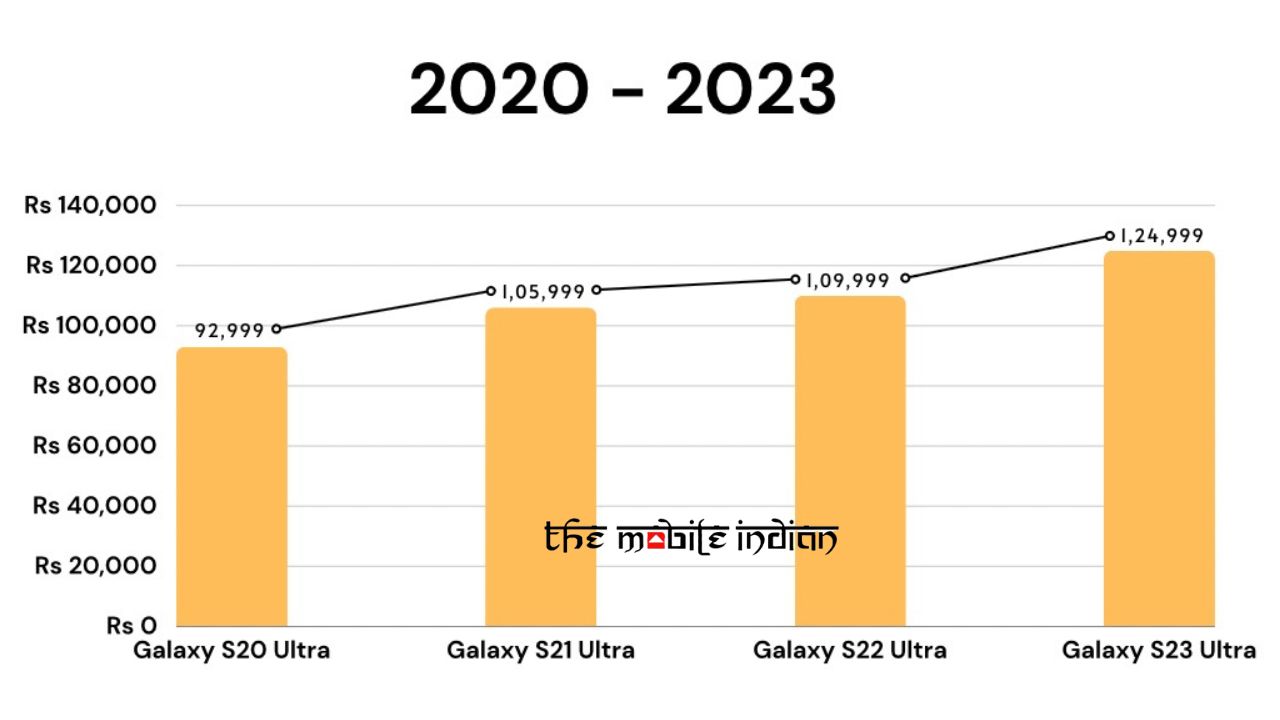
The base model Galaxy S23 also got a better chip and a bigger 3900mAh battery than last year’s Galaxy S22. Its price increased by Rs 2,000 for the base variant and Rs 3,000 for the 256GB model over the Galaxy S22, which was again quite fair. Overall, the only major change in Galaxy S23 over the Galaxy S22 series was using a better chip, which we feel was worth the price increase across all the models.
Samsung Galaxy S24 Series (January 2024 – ??)
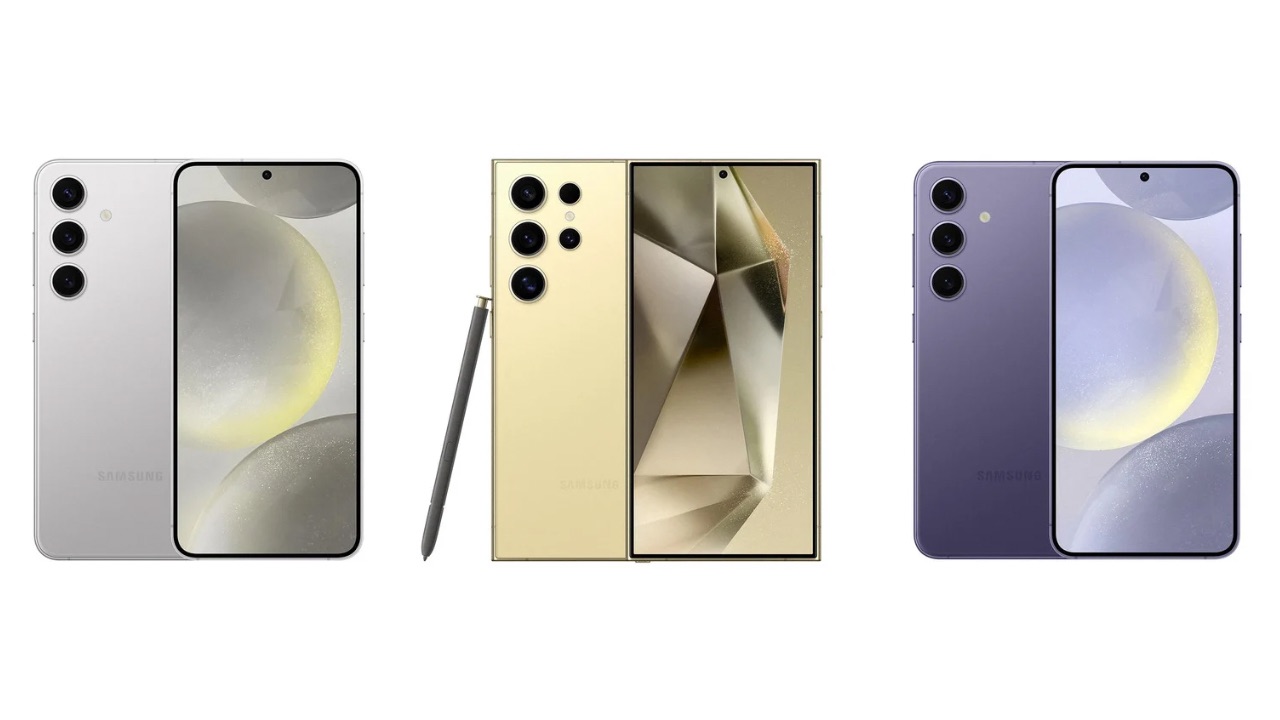
Next up is the Galaxy S24 series, coming later this month on the 17th. While we do not have its official price yet for obvious reasons, the leaks so far suggest that Samsung Galaxy S24 Ultra will start from Rs 1,34,999 in India, which would be a Rs 10,000 price increase over last year’s Ultra model. The Plus model could begin from Rs 1,04,999, again a Rs 10,000 increase over last year’s base variant of the Galaxy S23+. However, the Plus model could reportedly have 12GB RAM in the base variant this year. There’s no word on the pricing information of the Galaxy S24.
Leaks say that the Galaxy S24 and Galaxy S24+ will once again employ bigger batteries. To be precise, the S24 will have a 4000mAh cell over 3900mAh in S23. The Plus model will get a 4900mAh battery, the biggest ever in a Galaxy S Plus series device. Moreover, the Plus model will also get a QHD+ display, similar to the Galaxy S20+. All the models will have a minor refresh in design which would be a flatter frame and a brighter display at 2600 nits brightness compared to 1750 nits on S23+ and 1500 nits on S23.
The Galaxy S24 Ultra, over the Galaxy S23 Ultra, will have an upgraded telephoto sensor, titanium frame over Armour aluminium used in previous two generations of Ultra models, brighter display, and a more powerful chip, which should be the latest Snapdragon 8 Gen 3. The chip situation is difficult to determine for the other two models, as the latest leaks say that the Galaxy S24+ will get Snapdragon 8 Gen 3 processor while the Galaxy S24 would get the Exynos 2400 mobile platform in India.
We feel that the Galaxy S24+ will be the phone to look out for this year as it gets the most notable upgrades. If it’s leaked price is true, then the Rs 10k price jump would indeed be worth it. Then comes in the Ultra, which we feel isn’t worth the price hike considering the chip is the only major upgrade and those with a Galaxy S23 Ultra, including us, haven’t complained regarding the performance of the device, meaning the Snapdragon 8 Gen 2 is still powerful enough. Pricing information for the Galaxy S24 is still under the wraps. We’ll have to for January 17 to find out the official India pricing for the Galaxy S24 series.


